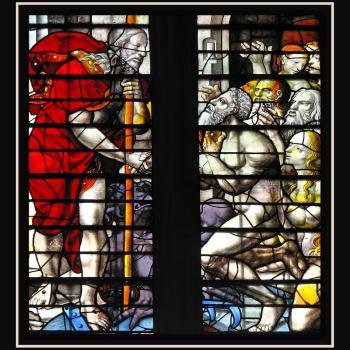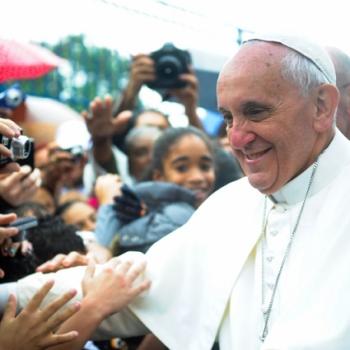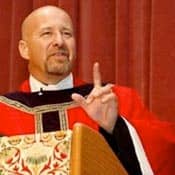Twenty years ago, in November 1992, I was a priest in the Church of England. On that November afternoon I sat watching a TV screen waiting on the General Synod of the Church of England to vote for or against the ordination of women to the priesthood. They voted in favor.
The decision caused me to look again at the authority structures in the Church of England. In the debate on women priests, good people were on both sides of the argument. People on both sides thought they were doing the will of God. Both sides sincerely believed Scripture and reason and truth were on their side. Men and women on both sides were bitterly opposed. All thought they were on the side of the angels and the other side were dancing with the devil.
The mechanism for deciding such things in the Church of England is a body called the General Synod. Made up of three houses—Bishops, Clergy, and Laity—the General Synod is elected from the grass roots up across all of the Church of England. It is supposed to be representative. However, because it is an elected body, and because this body makes such important decisions, the elections are held in the usual atmosphere of campaigning and working to attain the 'right' number of votes.
During the debate over women's ordination to the priesthood twenty years ago I came to question the whole methodology of Church of England's decision making. How could an elected body know what was best for the whole church? Furthermore, the voting process rarely convinced anyone who opposed the result of the vote. This is because religious members did not consider their view to be simply a matter of opinion, but to be God's will. If their side lost they did not say, "Ah well, the Synod has spoken. That settles it." Instead they cried, "We did not rally enough votes. Back to the trenches! Let's get it through next time!" They then spent the next five years campaigning for the change that was voted down or they spent the next five years campaigning for ways to repeal the change they had voted against.
For an Anglican believer the sources of authority are the Sacred Scriptures, human reason, and tradition. But this begs the question, "Who interprets Sacred Scriptures? Whose human reasoning is trustworthy?" and "Which tradition?" In the 1992 debate on women's ordination, and in the present debate on women in the episcopate both sides appealed to Scripture, reason, and tradition. Both sides were utterly convinced they were right. Who is to say which side had it right? Flip a coin? Roll the dice? General Synod? Who cooked up the General Synod in the first place? Where did it come from and why should it necessarily have the skills and experience to decide on such matters?
So an elected body makes the decision. That's when I made a decision too. I decided to look again at the Catholic Church. She offered a decision making process which was very impressive. When trying to decide on a difficult issue the Catholics considered the witness of Scripture, but she also had a final authority to interpret the Scripture. Anyone can read the Bible, but the Catholic Church drew on an international body of scholars and theologians and bishops to interpret the Scriptures correctly and with authority.
The Catholic Church also had a capacity for listening to the voice of tradition not only within one national church, but to the voice of tradition around the world and down through two thousand years of history. She considered the voice of the Eastern Orthodox. She weighed up the voices of what G.K. Chesterton called "the greatest majority"—the dead. That is to say she weighed up the voices of all the saints and theologians and bishops and doctors of the church who had thought and prayed and fought and prayed down through the ages.
The Catholic Church was also able to look at current issues from a much wider perspective. She was not concerned merely with the believers in one country and in one culture. Instead, Catholics weighed up the concerns of all Catholics everywhere. The demands for women's ordination, for example, were mostly from the developed countries. Rome looked at the big picture and considered what Catholics in the poorer countries thought. They listened to those in the developing world who otherwise had no voice.
Finally, Rome was not swayed by considerations of political correctness. She was not concerned about what sold or what was popular or what might be considered polite or impolite. She did not have to please the British parliament or the Queen of England. The Catholic Church's concern was with the truth of the Christian faith as revealed by God. If that sold well amongst the people, all well and good. If it did not, well then, bring on the lions, the coliseum, and the crowds.
After much consideration and consultation, in May 1994—two years after the Anglican decision to ordain women as priests—Pope John Paul II came out with a short document. Titled Ordinatio Sacerdotalis, the letter goes through earlier papal documents from Pope Paul VI and expounds the reasons why only men are chosen as priests. It refers to Scripture and tradition and concludes in very clear terms:





